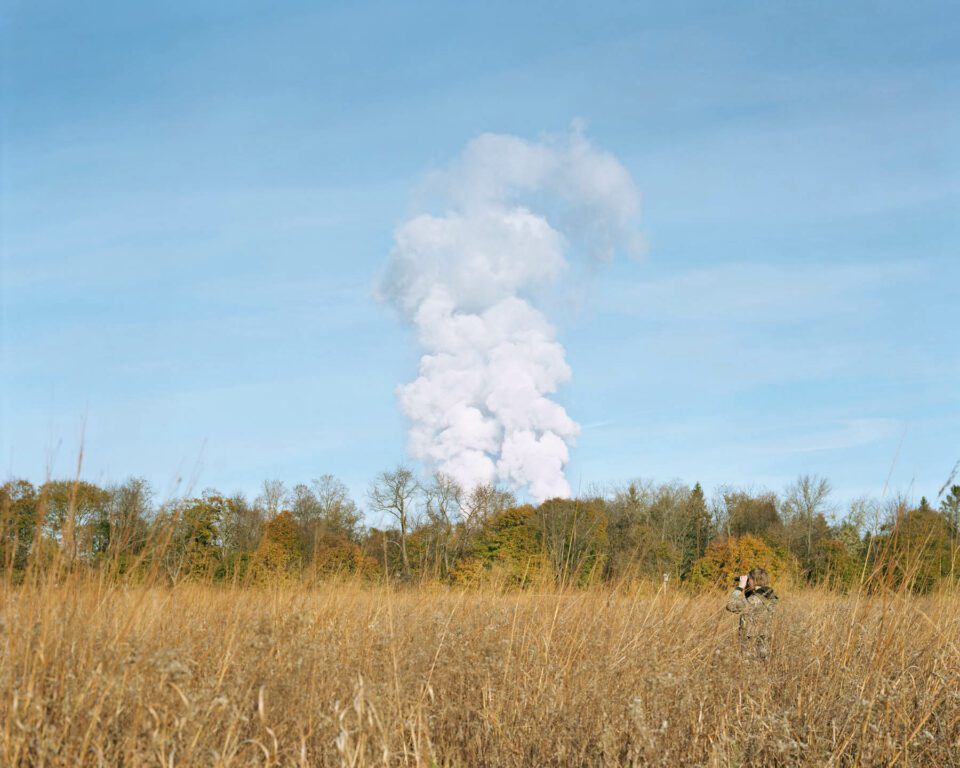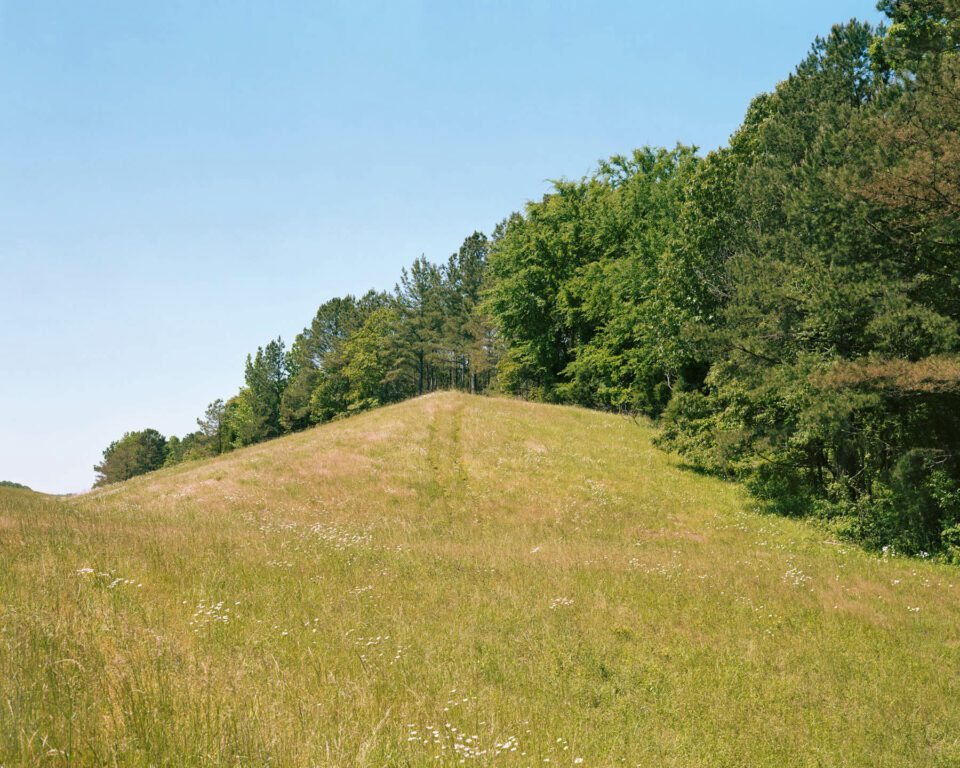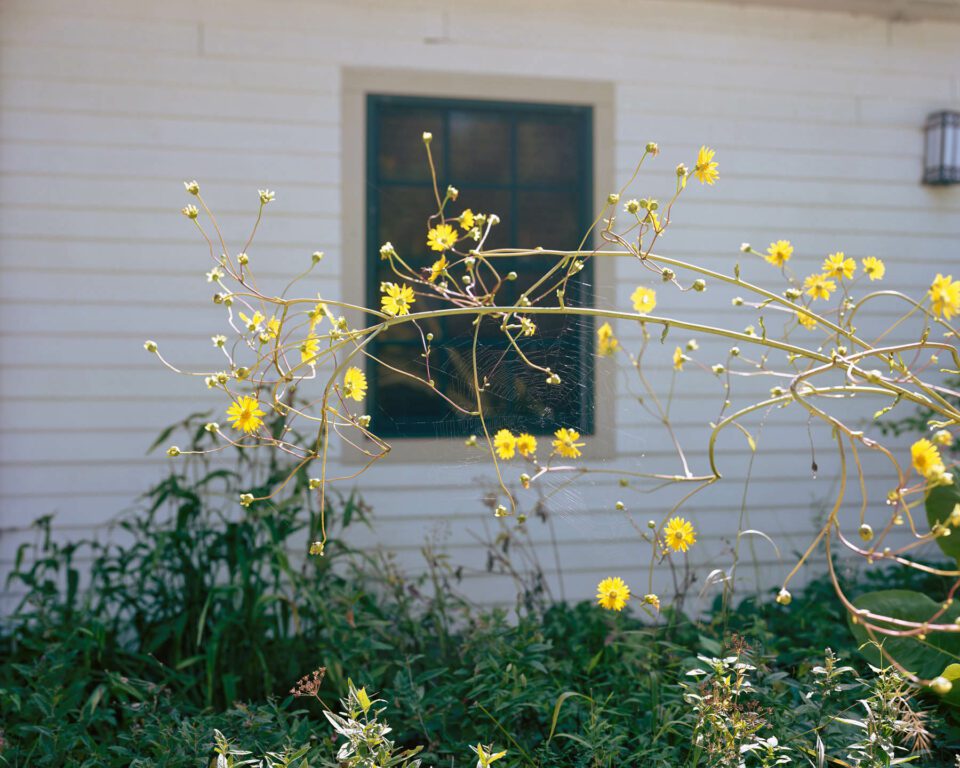On 20 January 2017, Donald Trump was inaugurated as the 45th president of the USA. On 21 January 2020, the first case of Covid-19 was reported in Washington state. By this time, Alec Soth (b. 1969) couldn’t bring himself to make work about America. Unable to move freely, consuming news bulletins on the TV or stories on the internet, he was appalled. Things are, in many ways, even worse now than they were back then. According to the Gun Violence Archive, this year there have been four mass shootings every week. In each case, at least four people have been injured or killed excluding the shooter. The deadliest of these so far was on 24 May, when a man in Uvalde, Texas, opened fire at a school, killing 19 children and two teachers. Exactly a month later, the Republican-dominated Supreme Court overturned the landmark 1973 Roe v. Wade ruling, causing global uproar.
However, Soth is known for making beautiful, tender and lyrical images about America, from Sleeping by the Mississippi (2004) to Niagara (2006) and up to his most recent series, A Pound of Pictures (2022). Soth has, to widespread acclaim, managed to connect disparate images of people and places into large-scale visual symphonies that speak to one another. Featured subjects include Julie in Austin, Texas, with tousled golden hair; Charles in Vasa, Minnesota, who, dressed in overalls, clutching a model plane in each hand; Melissa, the bride who sits in quiet contemplation outside the Flamingo Inn in Niagara Falls; and Bil, an elderly gentleman from Sandusky, who smiles as he dances alone across the floor of a community hall in Ohio. These subjects share more than geography, these individuals are connected by a difficult-to-articulate, but nonetheless unmistakable, sensibility. Soth has covered thousands of miles on his travels. Road trips have sent him zig-zagging back and forth around the American landscape for more than two decades. But the journey began in Minneapolis in 1999 when the photographer was fresh from studying at Sarah Lawrence College, New York. “I’d decided there was no way I was going to make a living as an artist – it just wasn’t feasible. I also thought it would kill my passion for photography to be taking pictures of socks or whatever for money, so my photography was something pure that I did on the weekends,” Soth recalls. “I didn’t care what anyone thought of it. I felt really free.”

After being awarded a funding grant, he jumped in his car and set off, following the Mississippi River, which takes in 10 states: Arkansas, Illinois, Iowa, Kentucky, Louisiana, Minne- sota, Mississippi, Missouri, Tennessee and Wisconsin. These travels resulted in a seminal photobook, Sleeping by the Mississippi, first published in 2004, which is now considered a classic. It presented America at a distinct time in history – after 9/11 but before the economic crash of 2007 – but it also had a haunting, timeless quality. Ostensibly, Soth was making documentary photography. Yet, infused with pro- found empathy, the large-format pictures of landscapes and loners felt more poetic than the strictly observational.
Sleeping by the Mississippi made such an impact that, post-publication, Soth was invited to join the prestigious Magnum Photos. Beyond critical praise, however, the publication had helped to define Soth’s methodology as an artist: driving to, or through, a place, and photographing strangers and scenes along the way. Soth, of course, is not the first American to be inspired by the open road. He follows a well-trodden cultural path, from Jack Kerouac’s seminal postwar novel On the Road (1957) to Bonnie & Clyde (1967) and Dennis Hopper’s Easy Rider (1969). There’s no shortage of pho- tographers either, from Robert Frank (1924-2019) and his watershed photobook The Americans (1958) to Stephen Shore’s Uncommon Places (1982) – an encyclopedic representation of boulevards, street signs and motel rooms. However, the idea of “road trip photography” is something that makes Soth “a bit embarrassed”, he admits. “In my 20s I was kind of fighting against it. It seems so obvious, such a cliché. But it works for me so what can I say?” Paradoxically, it is precisely by working within an existing language that he has been able to do something entirely new. “It’s like music – you’re working within a certain idiom but, you’re bringing your own mix of influences, your own history, and maybe you can nudge it in a slightly different direction.”
Soth’s method requires being nimble – always on the go. However, working with a large-format camera gives the images a certain weightiness, even when they feature eve- ryday views. However, it’s not simply about the 8 x10-inch aesthetic, but the social effect this has on his relationship with those he photographs. “It’s like the automobile – the process creates this kind of interior space where I move through the world. There’s something about putting the dark cloth over my head [to take a picture] that has the same feeling. I’m out there but I’m inside a little, protective shell. I think of my photography as being as much about the distance between myself and a person, as it is about the connection,” he says. “People often say my pictures are lonely or sad. I think that quality is often seen in photography. There’s something so bittersweet about the medium.” Soth’s primary form is the photobook. “It’s intimate, tactile, and I can control the parameters – the size, the beginning, the end – more than with an exhibition.” He has 25 publications to his name and an imprint, Little Brown Mushroom. After Sleeping by the Mississippi came Niagara (2006).

The book intersperses exteriors of motels with portraits of couples, some nude, and single people with dramatic shots of the waterfalls, accompanied by ephemera in the form of scanned handwritten love letters – a practice that is now far more commonplace in documentary photobooks. At times the material is disturbing, declarations of love sliding into threats, desire into hatred. “I didn’t know how dark it would get,” he says. “At a certain point with the editing, I had to work out how to get away from that intensity.” More than the nude portraits, the love letters were the most difficult aspect of the project to realise. “There was no precedent for walking up to people and asking for their love letters. People would look at me like I was crazy. But I made seven trips to w, so I developed trusting relationships there.”
Many more monographs followed. Paris Minnesota (2007) was a fashion-inspired project that pitted Soth’s home state as the cultural equal to France’s romanticised “city of lights.” Dog Days, Bogotá (2007) comprised a diary- like series of images made over the two months Soth and his wife spent in the Colombian capital whilst they were waiting to adopt their daughter, Carmen Laura. The book became a love letter of sorts, spurred on by the words of Carmen’s birth mother, who wrote: “I hope that the hardness of the world will not hurt your sensitivity. When I think about you I hope that your life is full of beautiful things.” The Last Days of W (2008) captured the USA at the end of George W. Bush’s presidency, defined broadly as “a panoramic look at a country exhausted by its catastrophic leadership.”
By this point, Soth found himself creatively frustrated, longing to rediscover a sense of freedom that permeated his early work, when there were no expectations of sty- listic consistency or continued success. In fact, he nearly published his next book, Broken Manual (2010), under the pseudonym of Lester B. Morrison – a character he invented when developing the project, which was about men who flee society as monks, survivalists or modern-day hermits.

The publication – which includes fictional texts that take the form of guidebooks on becoming a recluse that Soth discovered online – is, about “the failure of running away.” Ironically, most of the men in the book were quite easy to find. “It’s a fantasy – the idea of disappearing from society. We can’t.” To underline this point, Soth’s next project, Song- book (2014), took him right into the heart of community life, reporting for The LBM Dispatches, a newspaper Soth and his friend the journalist Brad Zellar (b. 1961) concocted and printed, as well as assignments for The New York Times. “I was done with photographing lonely men. Brad and I came up with the idea of being reporters for a fictional newspaper, which became a structure like the Mississippi,” he recalls.
Soth’s books reflect upon, and in turn become part of his- tory, so it’s hard not to wonder how differently they might have turned out had they have been made at a different time. If Sleeping by the Mississippi had come later, for ex- ample, would it have been a different kind of book? “That’s a fascinating question. When we made Songbook, I thought, wow, America is so different from how it’s portrayed. For all the problems, there’s more warmth, more connection than meets the eye.” Then came Trump. “For a time, I thought, ‘this place is evil, I just don’t want to deal with it. It was a struggle to remember why I loved photography. But even- tually I got back there.” Soon he was on the road again, making photographs that would appear in his most recent book, A Pound of Pictures (2022), which is collected in the compilation Gathered Leaves, republished as an annotated version by MACK. A Pound of Pictures is Soth’s most free- flowing publication since I Know How Furiously Your Heart is Beating, published in 2019 after he’d had a break from photography following Songbook. Soth describes Furi- ously as “an outlier” – an edit of pictures made around the world, from Bucharest to Toulouse, that meditates on the process of image sequencing entirely through the visual.

Soth’s photographs are elegiac – almost sonorous. Their edit creates a rise and fall that quickens and slows, as if it were a moving object. Poetry – especially the verses of Walt Whitman – is a big influence on his work. The title for Gathered Leaves refers to a line from Whitman’s Song of Myself (1855). In Soth’s latest work, this comes across more than ever. It shows us contemporary America, whilst simultaneously transcending that to say something about individuals and their humanity beyond national borders. “Once I was out again, encountering people, I found that society was often much richer than what it’s portrayed to be, which is not to say there’s not incredible divisiveness – I mean, unbelievable. You see political signs in people’s yards, but people are more complicated than that. If you take the time to meet them, you will see that complexity.”
Words: Rachel Segal Hamilton
Alec Soth: Gathered Leaves is published by MACK Books
Image Credits:
1. Alec Soth, Temple Adida. Davenport, Iowa, from A Pound of Pictures (MACK, 2022). Courtesy of the artist and MACK.
2. Alec Soth, Birdwatching. Linfield, Pennsylvania, from A Pound of Pictures (MACK, 2022). Courtesy of the artist and MACK.
3. Alec Soth, Water Valley, Mississippi, from A Pound of Pictures (MACK, 2022). Courtesy of the artist and MACK.
4. Alec Soth, Springfield, Illinois, from A Pound of Pictures (MACK, 2022). Courtesy of the artist and MACK.
5. Alec Soth,Julie. Austin, Texas, from A Pound of Pictures (MACK, 2022). Courtesy of the artist and MACK.





